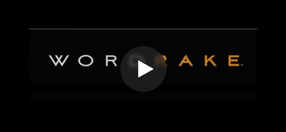How to Know If You Should Use "That"
Many of you know about the exciting life I lead here in a cabin in the woods, surrounded by deer, raccoons, coyotes, rabbits (that tantalize the coyotes), and all sorts of words (that tantalize me). My life is so exciting, I can spend hours entranced by the word that. Talk about a good time. But that is not a simple word; it is a mystical word. It lurks in about half of our sentences, changing chameleonlike from conjunction, to pronoun, to adjective. (We’re not even talking about the difference between that and which in a relative clause (See Tip: “The Million-Dollar Comma”); that's a different story.) That might be the most interesting word in the English language. I just made up this sentence with seven thats in a row, and the sentence is grammatically correct:
Angela piped up, after Ahmed mentioned that that, that that that that that professor removed was necessary.
Try that with any other word in the English language. But some people hate, and I mean hate, the word that. I don't know why, but I have heard hundreds of stories about managers who would not allow that to appear in a report. Ever. About judges who refused to let their clerks write the word that. Ever. English teachers, senior partners, editors. Ever. Forbidding us to use the word that, ever, often means we have to write around the hole where the that used to be, and that usually means we have to stuff a participle into the hole:
This is the question that permeates permeating the product manager’s list.
Neither the participle nor the that works better, so it's merely a change, not an improvement. Because writing is so difficult already, we don’t need arbitrary rules that hamstring us even further, like abolishing ALL thats. But here are a few editing maxims about the word that that will help you:
We need a that appearing before a verb:
It is a pre-9/11 novel that delivers the sense . . . .
And we need a that appearing before a noun:
At that moment I knew he could really see me.
I wished I was out of that tree, but I dasn’t come down.
(unless a verb follows that noun, and then we often can remove it):
An activity is anything that characters might be doing in a scene.
Ajax is also the basis of a package of programs that Microsoft is bundling.
But we rarely need a that before a pronoun:
When do you tell it that it’s not a sports car?
One of them that I came across sold a lot of Banksy’s original art.
or before this, those, these, or there:
But I am pretty sure that this would be their idea of a fitting memorial.
The latest health directives suggest that those numbers should be higher.
or before so, or after so:
It is a pre-9/11 novel that delivers the sense that so many of the . . . .
Eeyore halfheartedly hung his tail over the water so that Roo could grab hold.
In his classic book from 1965, The Careful Writer, Theodore Bernstein writes, “It is difficult to give precise guidance on when the conjunction that may be omitted and when it should be used. The reason is that in the vast majority of instances the inclusion or exclusion of that is optional and a matter of idiom – in short, how it sounds to one speaking English as a native tongue.”
Good advice. Let's try Bernstein's idea on the sentence below:
It is far enough along that I would like to ask for your brains in one regard.
If we remove the that, how does the sentence sound to your English ear? If it still sounds okay, leave it out; if the sentence now sounds awkward, put it back. You be the judge, and, yes, sometimes we will disagree.
WordRake can help you distinguish between necessary and unnecessary that’s—it knows the difference about 95% of the time—part of the nine complex patents underlying our WordRake technology. See for yourself in a free 7-day trial.


